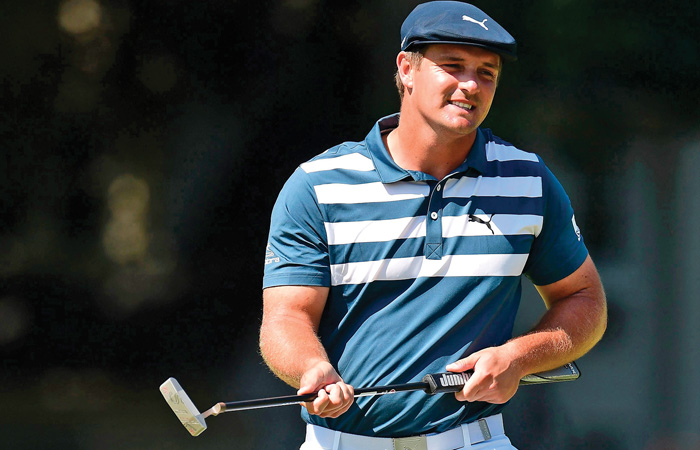How can a golfer improve his or her game quickly? Should improvement involve the swing or on-course play? And therefore, should the golfer’s coaching be swing-related or course-management related?
One well-researched sports coaching concept is to prioritize tactical, or strategy-based training over technical, or swing-change-based training. Based on one popular motor control theory, tactical training offers opportunities for golfers to self-organize their game by learning to deal with three constraints.
The first constraint is a golfer’s individual situation, such as strength and flexibility, current mental state or current level of fatigue. The second constraint is the environment. For instance, the slope on which the ball lies, the wind, or the grass type. The third constraint is the task – does it require a full swing or partial swing, what do the rules allow, what is the opponent’s score?

A coach using tactical skills training will create opportunities for different situations, ideally on the golf course, and ask the golfer many questions so that the golfer is able to figure out his or her own solutions and learn from them. Many great ideas for how to use tactical training for golf may be found in the new book “A Constraints Led Approach to Golf Coaching” by Renshaw, Arnott and McDowell.
There are many important reasons to use tactical training for all skill levels of golfers. And the constraints-led approach is perfect for environmental and task constraints. How else can one transfer one’s skills from learning or re-learning the swing to playing the game?
As that is the case, could there be any reasons at all for coaching to go beyond the tactical model? In my opinion, there are a couple of reasons that golf coaching should go beyond the tactical style of training and be partially technical.
The first one is time. In this day and age, when golfers want quick results and do not wish to pay too much for them, it might be difficult for a coach to spend the time with a single student on enough holes that they have enough opportunities for enough unique situations. Additionally, it is difficult, even for an experienced coach, to frame enough questions that the golfer can seek solutions for, during a single round of golf. And if left to his or her own devices, it would take much longer for individual golfers to figure things out for themselves. What a coach can typically impart is years worth of collective golf knowledge of the entire teaching community.

And then some personal goals of the golfer might simply not be conducive to tactical training. What if a golfer’s goal is to hit the ball further or straighter? What if they wish to play golf with less low back pain? Of course a golfer can work out in the gym more or buy better clubs. But a swing change might, for many, be the best solution. Such a swing change should be able to guarantee appropriate distance and direction and reduce the risk for injury.
In such situations, a golfer needs some technical training to be able to make a swing change. Tactical skills training tells us that a coach should not provide very detailed instructions and the solution should be found by the golfer and should be functional. Such functional solutions are ideal for constraints such as strength and flexibility or anthropometric issues but the one constraint that must be taught in a more old-fashioned way is that of joint constraints. The reason is that the golf swing is not a natural human movement, and is not one that the human body was designed to make easily. It is a learned skill and one that requires all the major joints to be positioned based on their design capabilities.
Here is my case for a targeted swing change to manage the individual constraint of physical joint positions. It involves positioning individual joints suitably during the set-up and backswing so they are not “stuck” and can work with all the other joints to produce a movement that improves performance and reduces injury. The solution would still be a functional one, and depend on what an individual is able to do, and the instruction should still allow the golfer to search for their own solutions, but all solutions should fall within the range of joint capabilities.
Dr. Kiran Kanwar, golf science consultant, is the developer of The Minimalist Golf Swing System – 100% scientific, simple, and specific. She has M.S. in sports science and nutrition, a Ph.D. in biomechanics, an anatomy a degree in Kinesiology and is an LPGA Master Professional. Visit her websites www.YourGolfGuru.com and www.mgs.golf